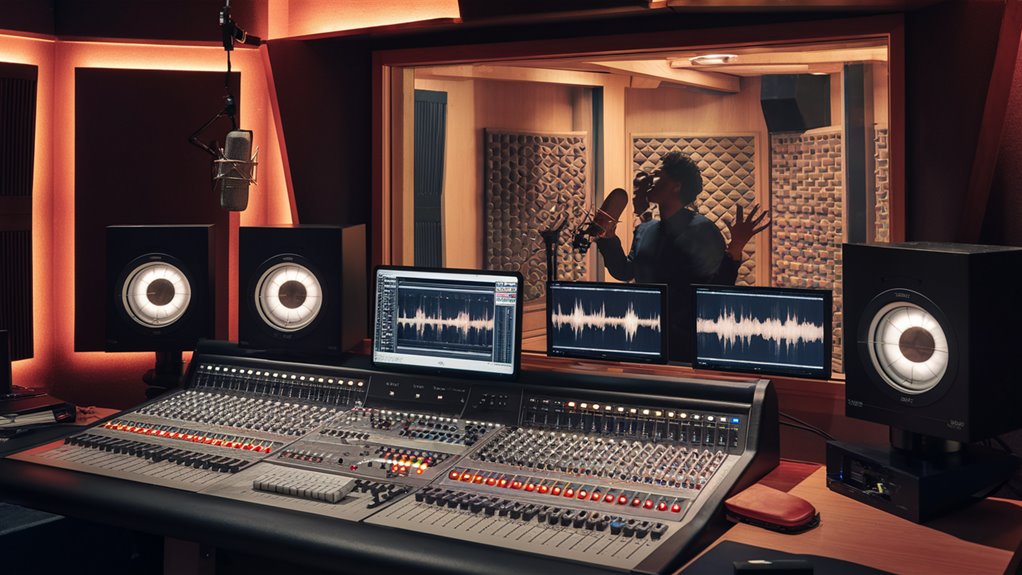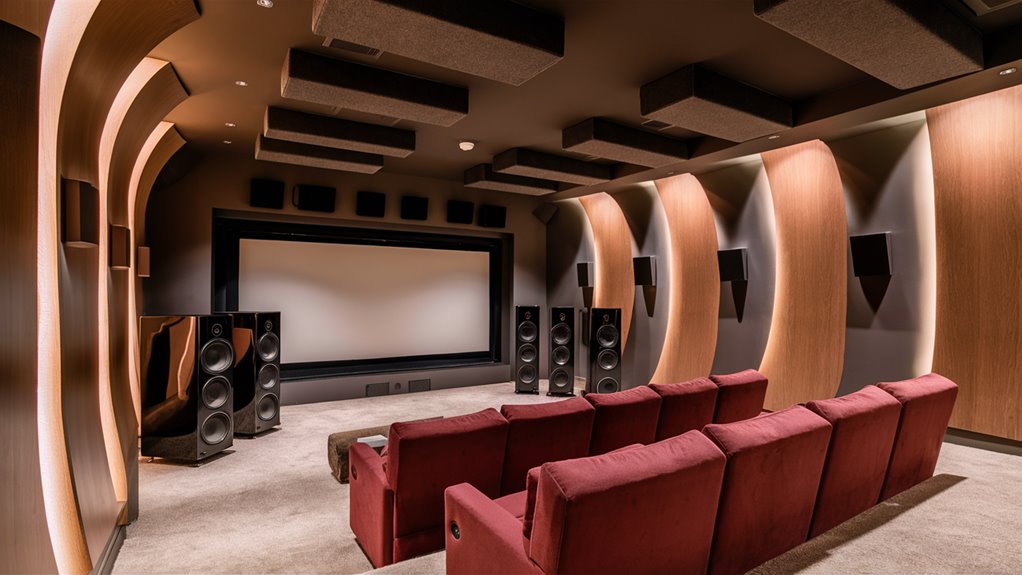Table of Contents
ToggleSing Like a Star: Great Sound Setups for Top Voice Work

Top Audio Work for Great Shows
Top sound setups make voice work better with top audio work and clean signal work. Using top-quality parts makes a great sound place for singers and show folks.
Main Parts for Great Sound
Class-D amps with <0.1% THD make sound clear while 24-bit/192kHz work gives studio-like sound levels. Beryllium tweeters catch high sounds well, showing every small part of voice work.
Sound Fit and Room Work
Top room work with RT60 times of 0.3-0.5 seconds turns any place into a great record spot. Smart speaker place at 60-degree angles sets up a great sound area, while aimed sound panels cut unwanted echoes. 호치민 밤문화
Signal Work and Boost
Top signal squeeze with 4:1 ratios keeps sound balance without losing voice feel. Exact EQ changes in the key 2-4kHz area boost voice clearness and power, giving pro-level sound like in top record places.
Set Work for Top Show
The full set of these top sound parts makes a full sound system that lifts voice work to pro levels. Each piece works together to give studio-like sound that meets the needs of pro singers and record artists.
Knowing Top Sound Tech
Knowing Top Sound Tech: A Full Guide
Main Parts of High-End Sound Sets
Top sound tech really needs three main parts: signal work, make-louder work, and speaker make. These parts work together to give great sound power.
Top digital signal parts change analog sound to digital signals at rates up to 192kHz, making sure sound is right across the full 20Hz-20kHz sound range.
Loud Work Done Right
High-end make-louder work uses smart Class-A/B or Class-D setups, keeping total sound mess low, under 0.1%.
Top systems give 50-1000 watts RMS per channel, with special amps handling certain sound parts for the best sound play. This special focus makes sure sound is clear and free from mess across all sound parts.
Top Speaker Making
Top Materials for Drivers
High sound tweeters use top materials like:
- Beryllium
- Diamond-coated titanium
- Ceramic
Mid sound drivers use aluminum or polypropylene, while big sound makers use kevlar or carbon fiber.
Pro-grade cross-overs work at right sound points between 80Hz-3kHz, making sure sound moves well between drivers. Top sound tests with good mics check flat response within ±3dB across all hearable sound.
Top Parts Worth the Money
Top Parts Worth the Money for High-End Sound
Needed Show Parts
When picking top sound gear, five main features give real show gains.
First, amp power rates (in watts RMS per channel) make sure there’s enough room for big sound jumps without mess.
Second, high-quality sound drivers using top materials like beryllium tweeters and kevlar big sound makers show top sound line flow within ±3dB.
Digital Work and Room Fit
Digital-to-analog parts (DACs) with high bit levels and rates (24-bit/192kHz min) greatly better signal clearness and sound range.
Room fix tech using top DSP parts measures and fixes sound odd parts using good mics.
Top connect parts with right guard and work specs reach signal-to-noise levels above 100dB.
Show Numbers to Watch
These parts work together to show real betterments across key numbers:
- Sound range from 20Hz-20kHz
- Total sound mess under 0.1%
- Stereo split over 50dB
- Top sound area with right sound placing
- Right sound color across the range
These show marks make a clear better listen feel that makes top-end sound gear worth the money.
Setting Up Your Sound Set
Top Guide to Sound Set Setup and Work

Best Speaker Place
Put your main speakers at a 60-degree angle from where you sit, making a same-side three-side shape.
Keep same space between speakers and sitting for perfect stereo sound.
Hang speakers at ear level (about 1.2 meters) for best sound throw.
Low Sound Maker Place and Work
Do the must low sound maker crawl way for top low sound answer:
- Put low sound maker in listening spot
- Play an 80Hz test sound
- Crawl room edge finding strongest low sound spots
- Put low sound maker where low sound feels most even
- Set cross sound point between 80-100Hz for smooth join
Set Work and Room Fix
Get pro-grade sound with right set work:
- Use sound level tool to set up
- Aim for 75dB sound level per speaker
- Set up time line up and sound link
- Use set’s auto room fix
- Put sound soak panels at first echo spots
- Place fixes 30-45 degrees from where you sit
Tune these parts to make a sound-fit listen spot with top truth and right sound area.
Voice Better and Sound Mix
Top Guide to Pro Voice Better and Sound Mix
Core Sound Work Marks
Voice better and sound mix need three main parts: sound level work (EQ), sound squeeze, and space work. Knowing these parts well is key for top studio-like voice make.
Top EQ Moves
The start of pro voice mixing begins with right sound level moves.
Focus on the 2-4 kHz area to help voice feel with a 2-3 dB lift. Cut unwanted low-end noise by making smart cuts below 100 Hz.
Fine-tune the 5-8 kHz sound part to max clearness and right word sound in the end mix.
Sound Range Work
Pro sound squeeze setups keep voice even while keeping real sound moves.
Use a 4:1 sound squeeze level with a -18 dB point for best show. Set fast sound times between 10-20ms and slow time at 40-60ms to get clear sound work that makes voice better without losing real feel.
Space Sound Skills
Top space ways need right echo time and echo control.
Set pre-delay setups to 80-120ms and keep echo fade between 1.2-1.8 seconds for pro show.
Keep your voice place at -6 dB compared to the mix peak, adding small pan moves of +/- 5% to make natural move and depth in the stereo field.
Room Sound Work
Room Sound: The Base of Top Sound Work
Knowing Room Sound Basics
Room sound forms the main base of any high-end sound set, changing up to 70% of the hear feel.
Understanding your place’s sound sign needs right sound time (RT60) checks, finding sound spots, and full map of echo spots to show sound wave moves.
Key Sound Work and Checks
Standing sound spots show at set sound parts between 20-200Hz, set by room size.
The must way for working these sounds is f = (343 m/s)/(2L), where L shows room length, width, or height.
Low sound fixes put in corners handle low sound build-up, while smart place of sound panels at first echo spots handle mid and high sound echoes.
Top Sound Fixes
Getting top sound needs keeping right balance between soak and split.
Aim for an RT60 time of 0.3-0.5 seconds for pro home studio places, while keeping at least 38% mix of soak parts to total wall area.
Smart sound fixes change muddy, unclear sound play into clean sound power through careful place and right part pick.
Picking the Right Gear
The Top Guide to Picking Top Sound Gear
Knowing Core Sound Details
Top sound gear pick needs right focus on tech details and set fit.
The start begins with source parts that give clean signs with total sound mess (THD) rates below 0.005%.
Amp and Speaker Match
When picking power amps, focus on RMS (Root Mean Square) watt power over peak power show. Key match parts include:
- Speaker feel (shown in dB/W/m)
- Impedance rates (shown in ohms)
- Power handle power with 20% space
Preamp Pick and Connect Types
High-show preamps should have:
- Signal-to-noise level over 100dB
- Sound range from 20Hz-20kHz (±0.1dB)
- Balanced XLR links for top noise cut
- Pro-grade RCA ins for common links
Digital Part Fit
Digital sound gear must back:
- High-res sound ways (24-bit/192kHz min) How to Book Karaoke Rooms for Large Groups
- Top digital-to-analog parts
- Ultra-low shake marks (<50 picoseconds)
- Pro-grade speaker wires (12-14 AWG)
Right wire work and signal chain set make sure top system show and sound truth.
